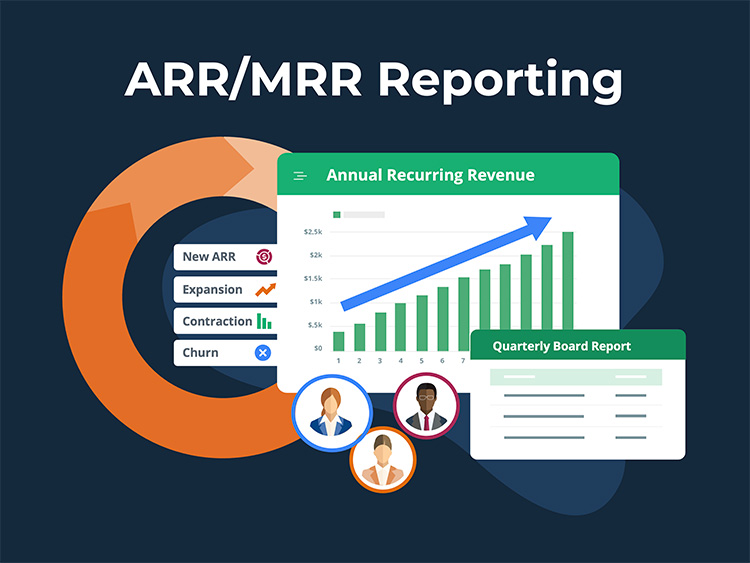A quick, simplified Q&A version of our main guide on calculating ARR when your pricing model includes usage.
Prefer the full deep dive?
Read the original post: How to Calculate ARR for Usage-Based Pricing
Understanding ARR + Usage
Why is ARR harder to calculate when a product has usage-based pricing?
ARR is straightforward with fixed subscription fees because the recurring amount is known. Usage-based fees fluctuate, making it harder to determine which portion is truly recurring.
Why does usage variability matter?
Because the more revenue fluctuates month to month, the harder it is to classify as predictable or repeatable.
When to Include Usage in ARR
When should usage-based revenue be included in ARR?
When it is predictable and consistent over time, especially when viewed across the entire customer base.
What patterns indicate predictability?
Month-over-month stability or consistent long-term behavior that recurs across customers.
When to Exclude Usage from ARR
When should usage-based revenue be excluded from ARR?
When usage varies significantly, is irregular, or does not repeat reliably.
Why exclude inconsistent usage?
Because sporadic or unpredictable usage cannot reasonably be classified as recurring.
Annualization Methods for Usage Revenue
How do companies annualize usage-based revenue?
Common approaches include:
• Annualizing last month’s usage revenue (× 12)
• Annualizing last quarter’s usage revenue (× 4)
• Using trailing 12-month usage revenue (× 1)
Which approach is best?
Any of the above can work as long as the method is consistent and clearly documented.
What if usage is seasonal?
If usage is seasonal but consistent year over year, average it across a 12-month period to determine the recurring portion.
Segment and Seasonality Considerations
What if some customer segments show predictable usage and others don’t?
Include usage-based revenue for consistent segments and exclude it for segments with irregular patterns.
Why separate segments?
Because different customer groups may inherently behave differently, and mixing inconsistent data can distort ARR.
Combining Subscription + Usage for Total ARR
How do you combine subscription revenue and usage-based revenue to get total ARR?
• Calculate ARR for fixed subscription fees
• Annualize the recurring portion of usage-based revenue
• Add the two together to form total ARR
Why calculate them separately?
Because fixed fees and usage-based fees behave differently and require different logic before combining.
Governance & Internal Alignment
What should companies do before finalizing an ARR methodology?
• Document the calculation method
• Align internally or obtain board approval
• Train accounting, rev ops, billing, and FP&A teams
• Embed the method in systems, spreadsheets, and processes
• Communicate the methodology externally to investors and stakeholders
Why is consistency important?
Because ARR is a key growth metric, and inconsistent calculations erode credibility.
One-Sentence Takeaway
Accurate ARR for usage-based pricing requires clear rules on predictability, a consistent annualization method, and disciplined internal alignment.
Note: This Q&A guide provides a concise summary based on the original full-length article.
ARR Reporting Software
from Ordway
Track new, expansion, contraction, renewal, and churn ARR. Segment ARR by product line, geographic region, and legal entity. Report on ARR growth rates.
You May Also Like
 Navan’s SaaS Metrics at IPO
Navan’s SaaS Metrics at IPO
Navan’s SaaS Metrics at IPO
 Netskope’s SaaS Metrics at IPO
Netskope’s SaaS Metrics at IPO
Netskope’s SaaS Metrics at IPO
 What is the Rule of 40 in SaaS?
What is the Rule of 40 in SaaS?




